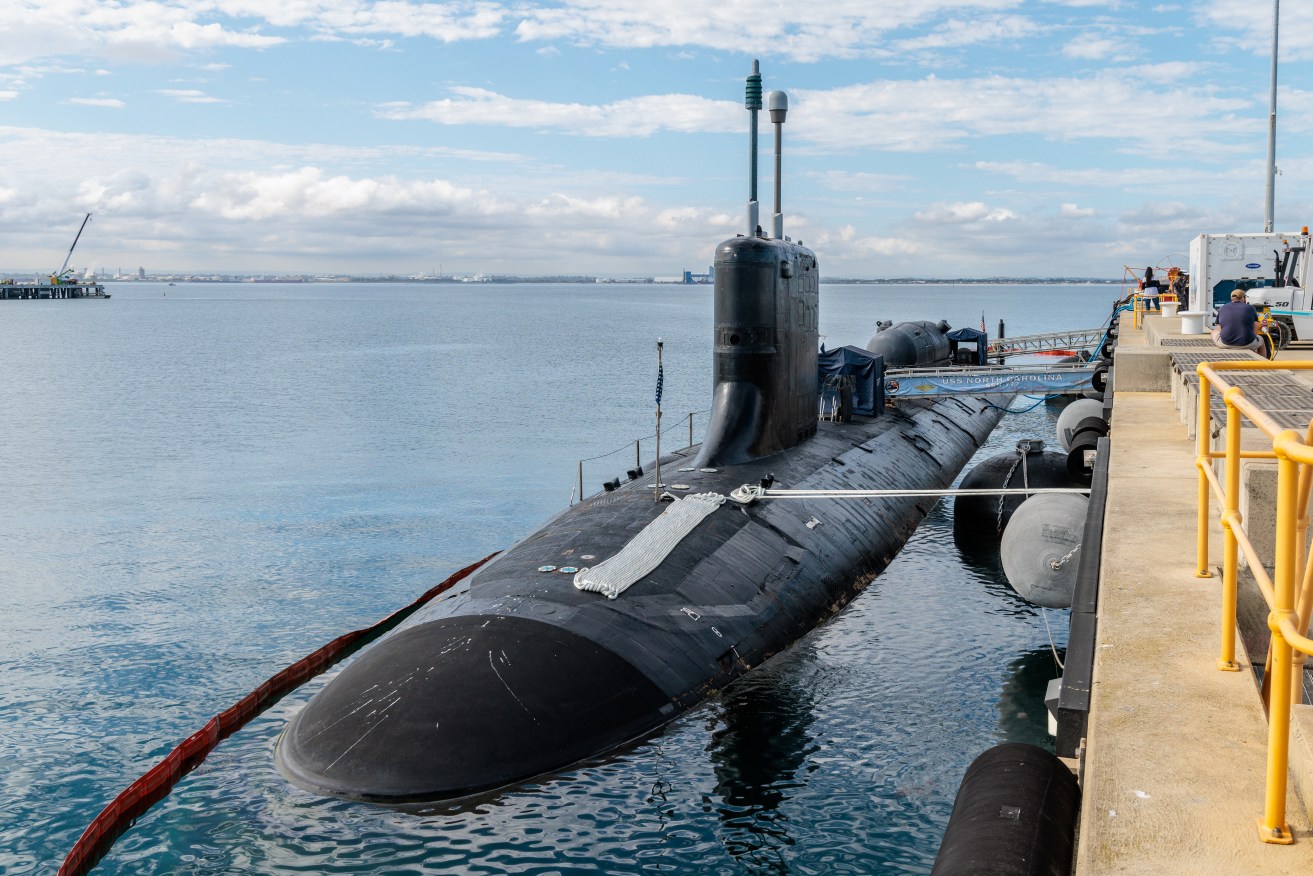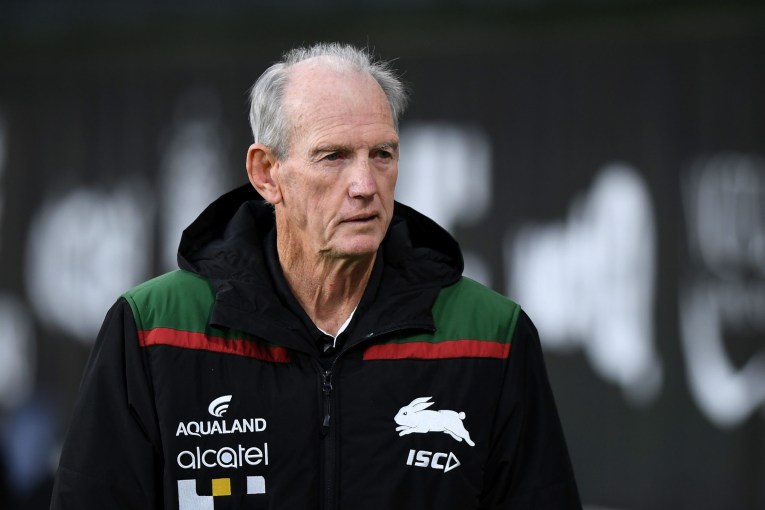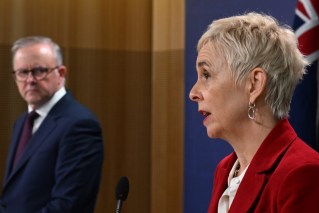We’ve spent $300 billion on new submarines – now we need someone to drive them
Thousands of scientifically-inclined students will have their university courses covered as the government attempts to nurture the workforce needed to build the long-awaited AUKUS nuclear submarine fleet.

A general view of the USS North Carolina, a Virginia-class nuclear-powered attack submarine (SSN-777) at HMAS Stirling Naval Base on Garden Island south of Perth, Western Australia, Monday, August 7, 2023. The USS North Carolina, with more than 130 crew members, is on a scheduled port visit as part of routine patrols in the Indo-Pacific region. AAP Image/Richard Wainwright) NO ARCHIVING
The government will fund 4001 Commonwealth supported places in science, technology, engineering and mathematics bachelor degrees across 16 Australian universities.
A quarter of those spots have been designated for institutions in South Australia, where the submarine construction will be based.
Defence Minister Richard Marles says the government’s $128 million investment over the next four years was critical to shoring up the much-needed workforce.
“The Australians who will help to build and maintain our conventionally armed, nuclear-powered submarines are at the heart of this historic, nation-building project,” he said.
SA will need to more than double its current skilled workforce from 3500 workers to more than 8500 by 2040 to deliver the trilateral submarine fleet, according to a defence report released in November.
To support this, the government will also am to engage 27,000 South Australian students in STEM education throughout primary and high school while preparing university students for the workforce via paid apprenticeships and an early careers program.
Experienced workers will be given the opportunity to upskill through mid-career transition programs.
The workforce recruitment effort has proved a challenge so far due as intense competition for labour and shortages already plague the industry.
But Mr Marles says the government’s push will help give more young Australians an opportunity to go to university and contribute to “one of the most significant industrial endeavours”.












